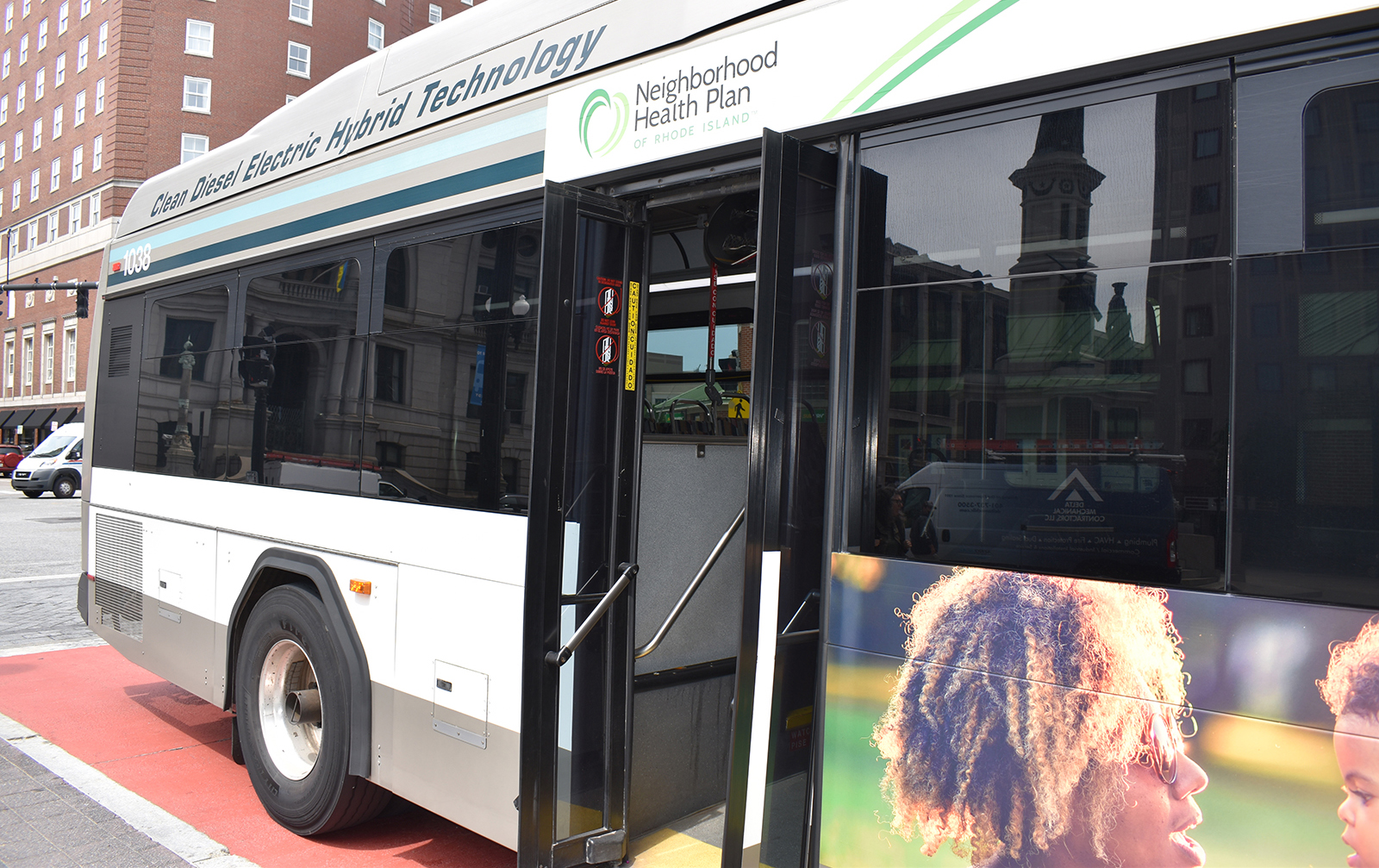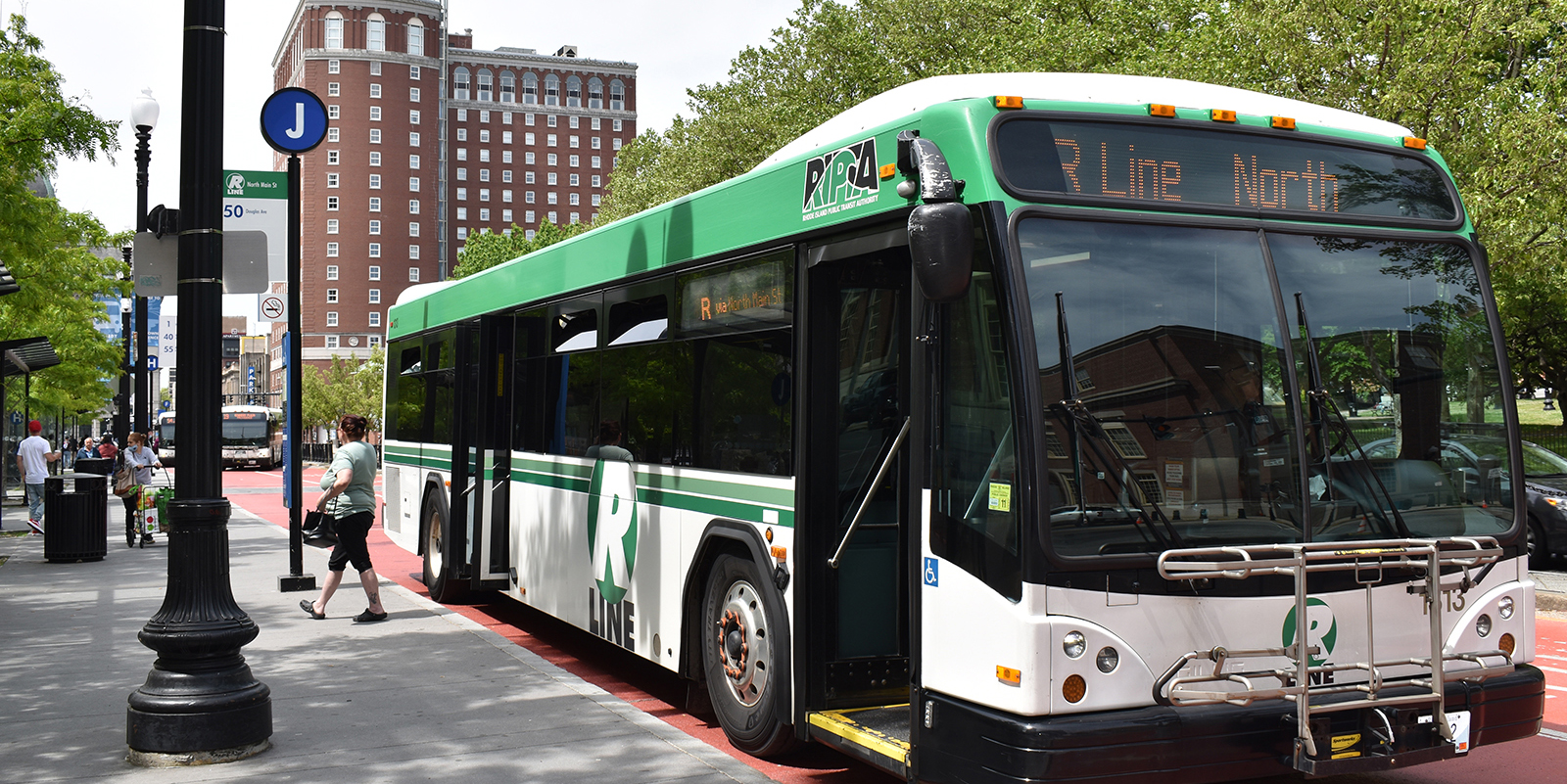RIPTA Focuses on Improving Design of Bus Stops
July 14, 2016
The Rhode Island Public Transit Authority (RIPTA) is developing a bus-stop design guide for use by the agency, the Rhode Island Department of Transportation (RIDOT) and municipalities. The guide will be referenced when roads with bus routes are repaved or reconstructed. It aims to make bus stops more accessible, safer, more informative and more consistent across the state.
Municipalities and RIDOT have a mixed record regarding upgrading bus stops during road resurfacing or reconstruction projects, according to Gregory Nordin, a principal planner at RIPTA.
When the municipality or RIDOT works with RIPTA early in the design process, outcomes tend to be better, he said, but in some instances RIPTA isn’t included until days before the project goes out to bid. At that point it’s generally too late, he said.
Nordin said the guide will define RIPTA’s expectation level, and result in road designers considering how to integrate quality bus-stop infrastructure into their projects early in the process.
“It will help us facilitate the conversation,” he said.
Because “every stop is unique,” as Nordin put it, the guide will not require cities and towns, or RIDOT, to use any particular bus-stop design in a given circumstance. Instead, it will explain various bus-stop typologies and the road conditions to which they are best suited. The guide will mostly avoid classifying typologies as urban, suburban or rural because, according to Nordin, decisions should be made based on road conditions, not the road’s general geographic location.
The guide recognizes a number of variables in its typologies, including the number of riders that use a bus stop, whether the road includes street parking or bicycle lanes, and what the adjacent land use is like. Typologies range from a bus simply pulling to the curb in a wide shoulder, to designs that incorporate separated bike lanes using floating, Americans with Disabilities Act (ADA) accessible islands.
Curb extensions at bus stops are a common feature throughout the typologies. Nordin said the guide will be heavily used by RIDOT because RIPTA operates primarily on state roads. Improving collaboration between the two agencies is a stated goal of the project.
RIPTA presented its bus stop typologies, which were formulated based on a review of design guides published by peer agencies, the National Association of City Transportation Officials and the American Association of State Highway and Transportation Officials, at three June meetings.
Feedback from the meetings, which included members of the public, local and state government officials, and people from the private and nonprofit sectors, will be used to craft a draft of the guide this August. The draft is expected to be presented to the RIPTA board of directors in September for approval.
In another initiative to improve passenger experience, RIPTA will soon begin offering matching grants to municipalities, nonprofits, businesses and other groups that want to sponsor an individual bus-stop improvement project. The agency will release a targeted list of high-volume bus stops that currently lack shelters that will be eligible for the program.



